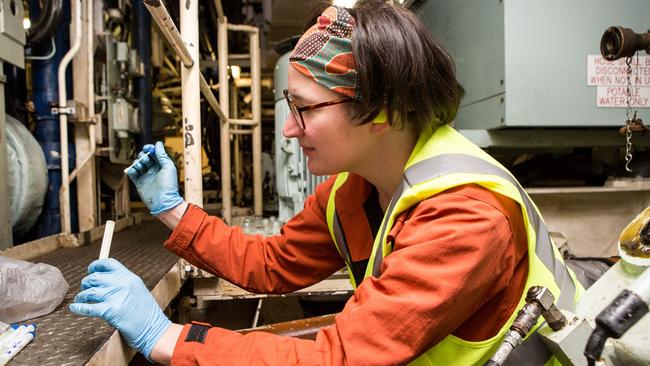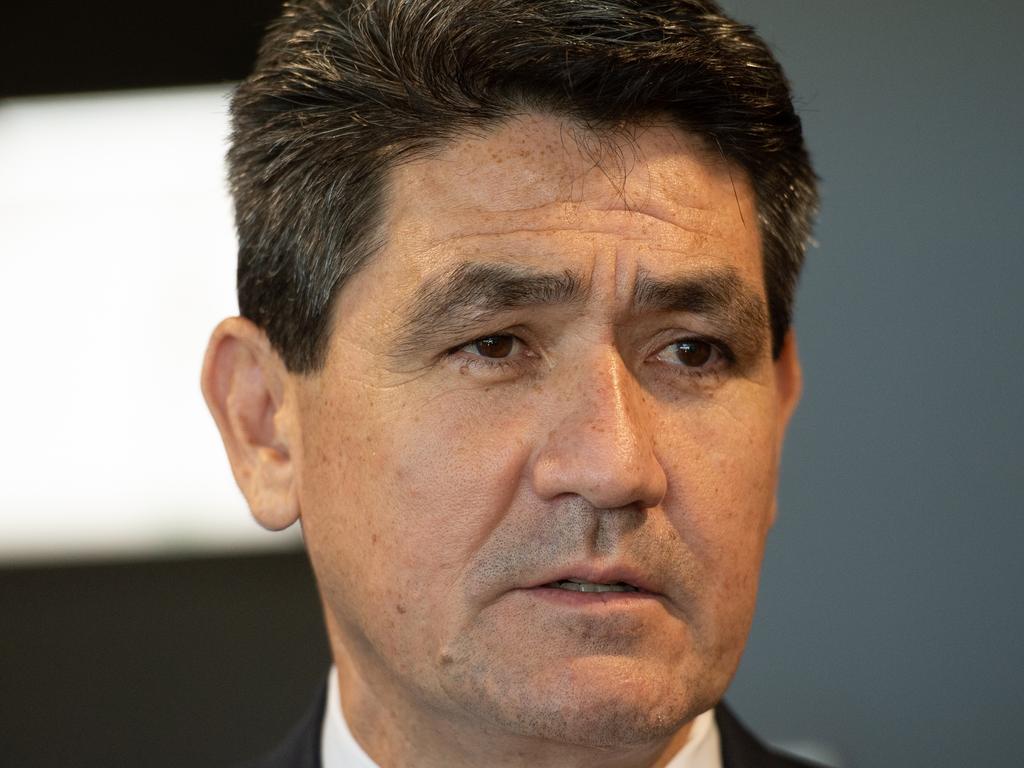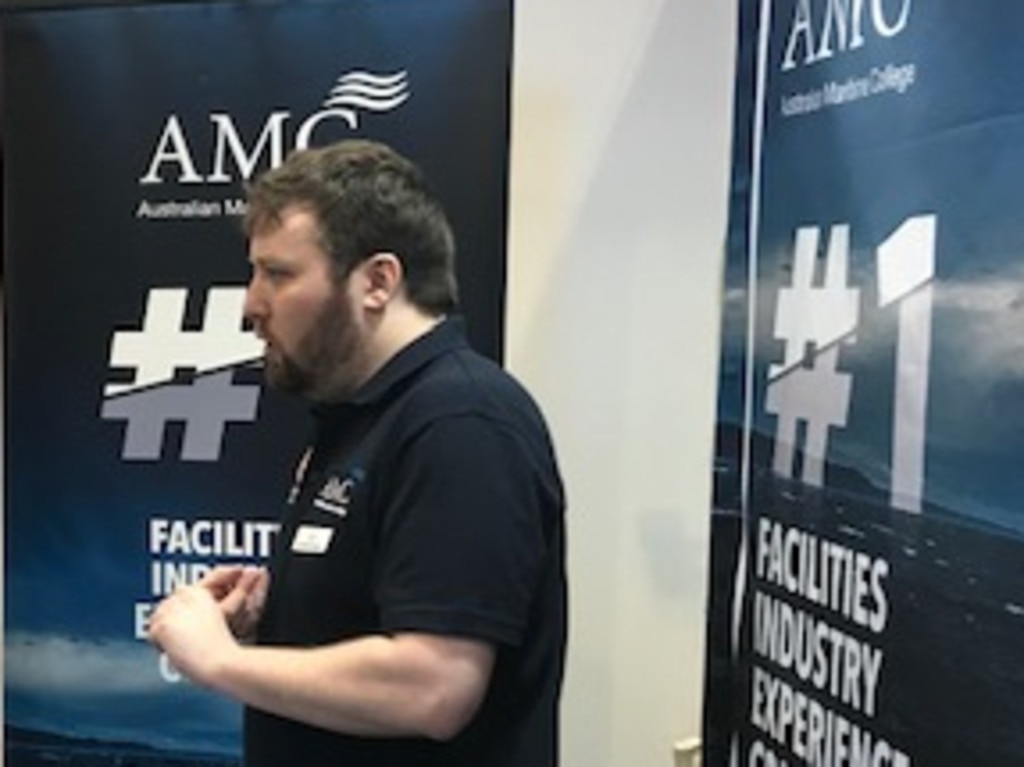Victoria assembles a research task force in defence manufacturing and sustainment
While defence research is a national endeavour, with research clusters located in major cities and regional towns, Victoria is turning into the main research hub.

From water tanks the length of three Olympic-sized pools that can stress-test the nation’s ocean-going fleet to tiny UV lights that keep underwater optical sensors uncompromised by ocean critters, the strategic importance of a defence research project’s potential impact cannot measured by its size.
Insights into the variety and scale of some of the nation’s critically important naval research endeavours will be under discussion at the PACIFIC 2019 Expo on October 8-10.
While defence research is a national endeavour, with research clusters located in major cities and regional towns across the country, Victoria is turning into the main research hub.
The Defence Science and Technology (DST) Group with 600 scientists is headquartered in the new Fishermans Bend development just 5km from Melbourne’s CBD. The humbly named technology and innovation precinct is also attracting some of the world’s most-high-tech companies, research institutes and universities. It will prove to be a catalyst for new collaborations and investments, connecting industry and researchers. Overseas experience suggests this is when magic happens.
Victoria’s universities account for 30 per cent of the nation’s total university-based R & D spend and nearly 40 per cent of defence R & D. That figure is set to expand in 2023 when the University of Melbourne opens a vast new engineering campus at Fishermans Bend, giving new life to the old seven-hectare General Motors Holden site.
Len Sciacca, enterprise professor — defence technologies at the University of Melbourne, says the new engineering campus will be a paradigm-shifting model along the lines of the university’s health precinct in Parkville. It will become an epicentre for research in advanced manufacturing, design, engineering, science and technology.
The $900m investment will include physically huge research infrastructure such as wind tunnels and autonomous systems laboratories, as well as Australia’s biggest research water tank — known as a tow tank — that can simulate oceanic conditions. It will analyse the impact of winds at up-to-cyclonic speeds on waves and how that interacts with ships, submarines and other ocean infrastructure.
At 150m it is more than twice as large as the university’s existing 60m tow tank — known as the Extreme Air-Sea Interaction Facility.
“Both tanks look at wave and structure,” Sciacca says.
“For example, the tanks help researchers understand how ships move through the ocean,’’ he says. “The insights drawn from that can be critically important to circumstances such as when a helicopter is about to land on the back of a frigate in high and unpredictable seas. The ship’s commander can tell the helicopter pilot when is the best time to land — otherwise you might have a Seahawk falling into the ocean.”
The tanks are also used to understand how to reduce the noise generated by submarines as they move through water and reduce water disturbance as they surface. Indeed, Jason Monty, head of the department of mechanical engineering at the University of Melbourne, has been studying the dynamics of a submarine’s telltale wake.
Ultimately, by understanding the wake’s hydrodynamic characteristics, researchers will be about to improve a submarine operator’s ability to reduce its detectability, therefore making the submarine more secure.
The work is timely as new surveillance and space technologies make locating submerged vessels much easier than in previous generations.
At the other end of the spectrum DST researcher Dr Richard Piola has concluded a 12-month trial of his surprising and innovative solution to biofouling.
Biofouling, which is a widespread and costly problem for all marine infrastructure and vessels, is when tiny marine creatures attach themselves to available surfaces.
When optical sensors, such as cameras are involved, it means they can be rendered useless within just a few weeks.
Piola’s radical innovation was to work with electrical engineers to develop tiny LED lights that emit UV rays. “They emit UV-C rays which damage the DNA of cells,” Piola says. “Anything that tries to settle and grow — especially in the early larval stage — is prevented from having regular cell functioning and so can’t grow and can’t reproduce. It stops them in their tracks.”
The first prototype has just spent 12 months at sea and remained biofoul-free for the entire time.
The trial ended when the lights, which are only a couple of millimetres in size, ran out of power. Now it’s time to refine what they have learned from the experience.
Defence research is not just about technology. The University of Melbourne is also doing research into advanced human performance.
“We are looking at ways of understanding cognitive loads on soldiers and sailors,” Sciacca says. “For example, how does fatigue affect decision-making.” Researchers are able to link psychological insights with profound analysis that comes from the university’s Computer Assisted Rehabilitation Environment (CAREN).
It is an adaptable platform that can measure human movement, particularly when under physical or mental strain, and is the only one of its kind in Australia.
CAREN has been described as something like “an immersive video game at a theme park”.
As Sciacca says, innovation and technological advances are critical for defence forces and national security agencies.
Australian investment in defence research has increased dramatically in the past five years or so. But it is always at threat of being leapfrogged by other discoveries and advances elsewhere undermining the advantage so briefly gained.






To join the conversation, please log in. Don't have an account? Register
Join the conversation, you are commenting as Logout